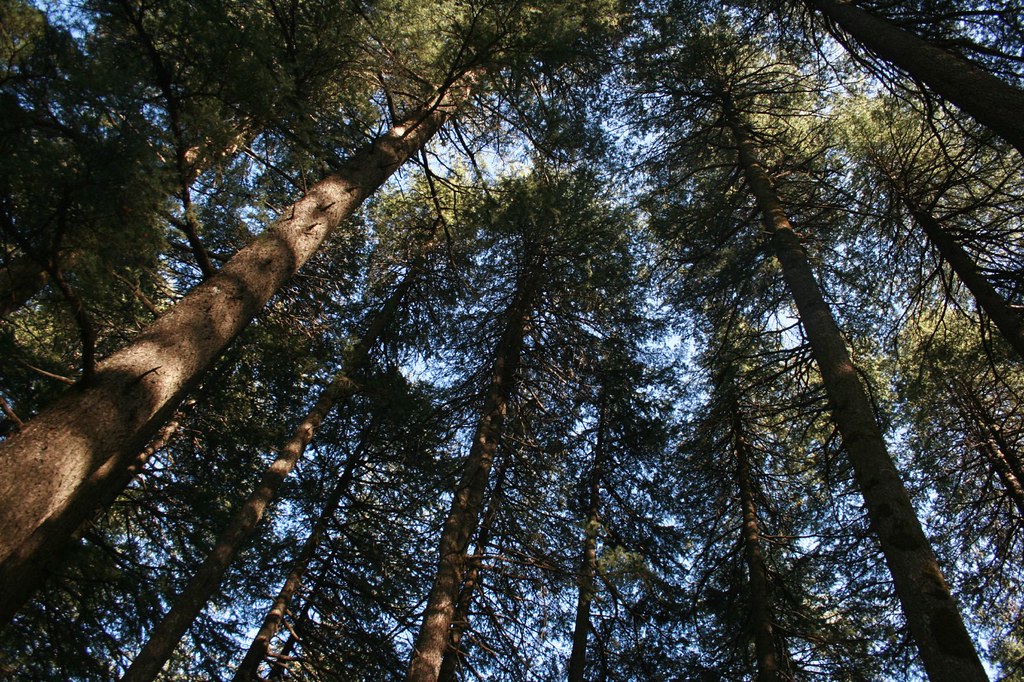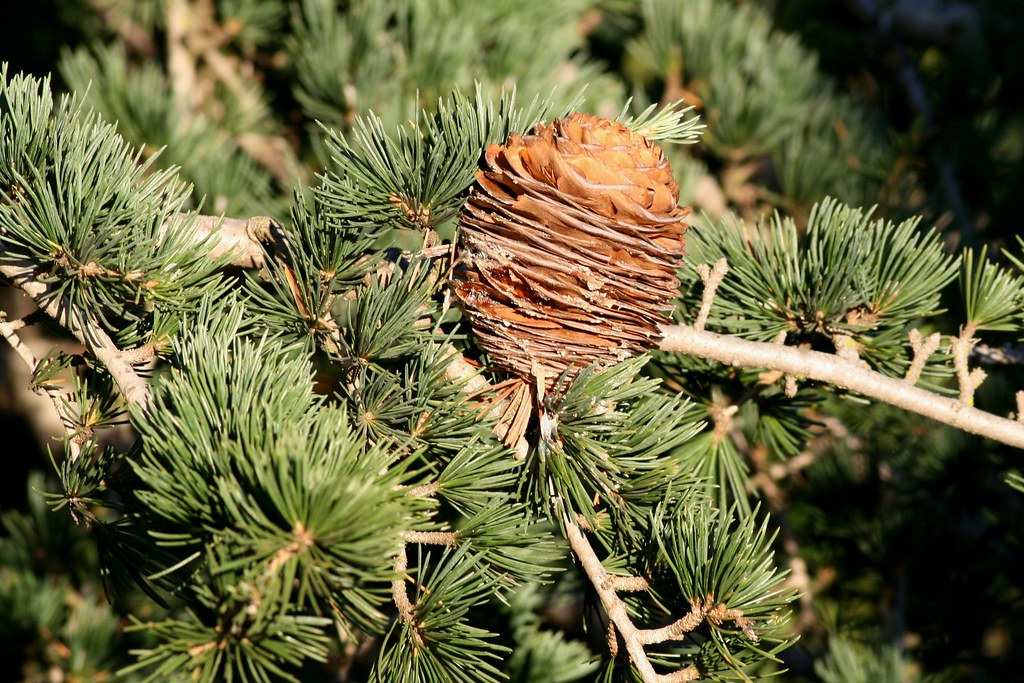 |
| The full canopies of deodar cedars in a forest. Photo credit: draconianrain |
The sanskrit root-word for "deodar" roughly translates to "wood of the Gods." An apt name for a tree that can grow up to 250 feet in its natural habitat. These heights are not reached by their ornamental kin in the U.S. Expect to see deodars closer to 70 feet with a maximum spread of 40 feet. Most deodars have a strong pyramid shaped canopy, although some older trees can take on a flat-topped and wide-spread appearance.
The evergreen leaves of the deodar are needles of 1-2 inches in length and are green or silver green in appearance. The needles droop gently from the tree, giving them their signature appearance. The cones of the Deodar stand upright and are barrel or egg shaped. The cones measure approximately 3-4 inches long and take 2-3 years to develop as they turn from blue to reddish-brown.
 |
| The cone of a deodar cedar. Photo credit: arthur_chapman |
Some additional facts about the deodar cedar:
- The tree grows quickly and has a dense canopy, making it ideal for natural wind breaks.
- The deodar's wood is desirable as a building material because of its ability to resist rot, durability, and fine grain.
- The tree's canopy makes an excellent home for smaller animals including birds because of its density
Deodar cedars are common throughout the District. Those wishing to see the trees in public settings can find them at Dumbarton Oaks, the National Arboretum, the National Zoo, the National Gallery of Art Sculpture Garden and on the White House grounds.

1 comment:
that is a pretty cone
Post a Comment